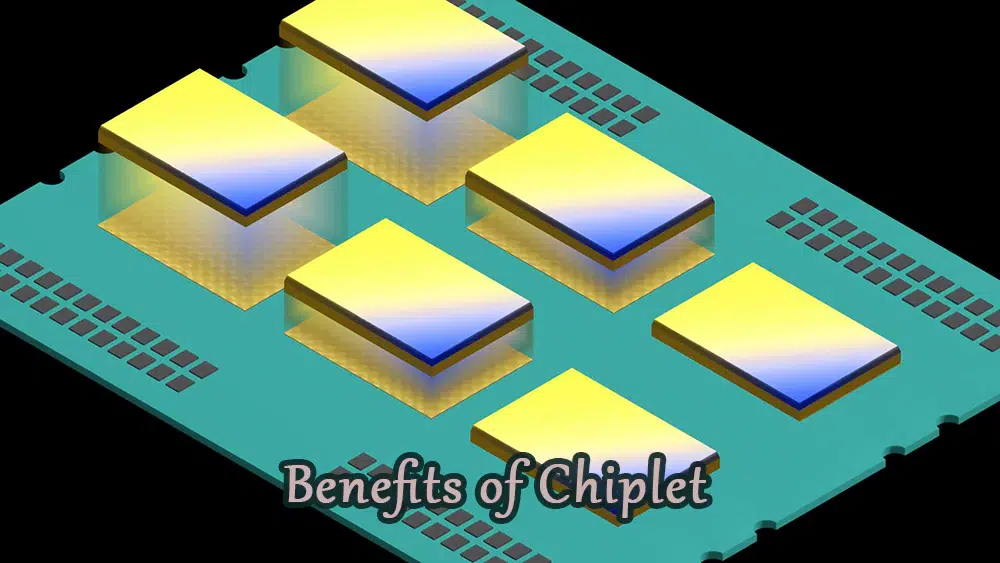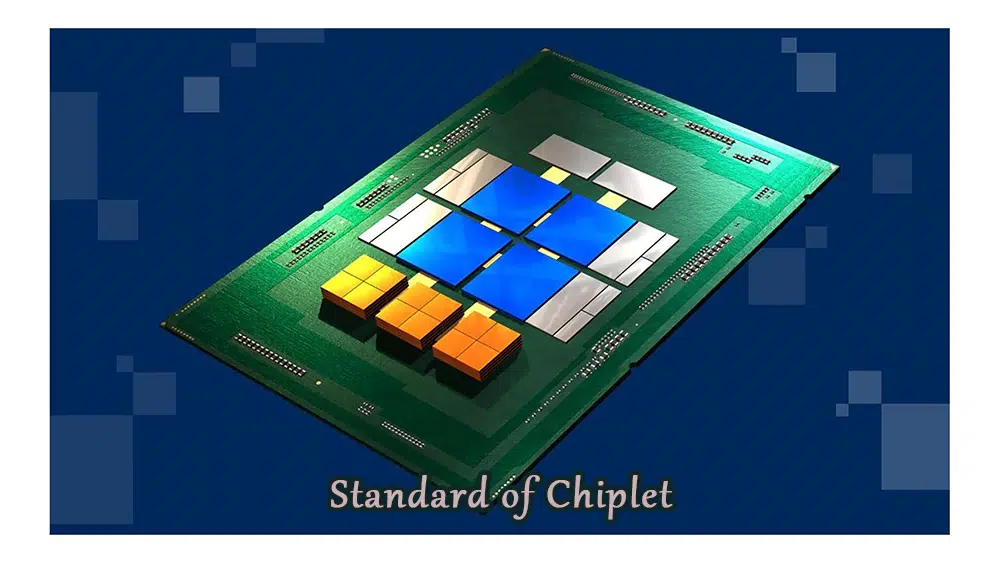Introduction:
In recent years, chiplet technology has emerged as a disruptive force in the semiconductor industry, revolutionizing the way integrated circuits are designed and manufactured. This guide delves into the depths of chiplet technology, tracing its evolution, examining market trends, exploring its myriad benefits, addressing challenges, scrutinizing standards, and envisioning its future trajectory.
Follow us on Linkedin for everything around Semiconductors & AI
What is Chiplet?
Chiplets, the building blocks of modern semiconductor architecture, are modular chips meticulously crafted to seamlessly integrate and form comprehensive system-on-chip (SoC) solutions. 
Unlike traditional monolithic chips, chiplets enable unparalleled customization and scalability by compartmentalizing complex functions into specialized modules. They serve as the bedrock of chiplet-based architectures, facilitating the creation of highly adaptable and efficient semiconductor systems.
Read More: Chiplets, AI and Beyond: Intel Blueprint for Future-Ready Chips -techovedas
History of Chiplet:
The inception of chiplet technology can be traced back to the burgeoning need for innovative solutions to counteract the escalating challenges associated with monolithic integrated circuits. 
Over the past decade, researchers and engineers have intensively explored the potential of chiplets, culminating in their emergence as a viable alternative to conventional chip designs. From initial conceptualization
to practical implementation, this technology has undergone significant development, with contributions from academic institutions, research laboratories, and leading semiconductor companies.
Read More: What is 2D, 2.5D & 3D Packaging of Integrated Chips? – techovedas
Market Prediction about Chiplet:
Market forecasts paint a promising picture for this industry, with robust growth expected in the coming years. Analysts project this market to reach substantial valuations, driven by escalating demand for high-performance computing, data analytics, and customizable electronic solutions.
As this technology matures and gains widespread adoption, it poised to transform into a cornerstone of the semiconductor landscape. It is fueling innovation and driving market expansion.
Benefits of Chiplet and Why are it Better?:
The advantages offered by chiplets over traditional monolithic designs are manifold. Chiplets enable rapid customization and upgrades, reducing development cycles and costs. 
By leveraging specialized processing elements tailored to specific tasks, chiplets enhance performance while minimizing power consumption. Moreover, chiplet-based architectures facilitate compact designs, streamline production processes, and optimize yields, resulting in tangible efficiency gains and cost savings for semiconductor manufacturers.
Challenges of Chiplet:
Despite their promise, chiplets confront various challenges that must be addressed to realize their full potential. Ensuring low-cost, high-reliability packaging remains a priority, necessitating advancements in packaging technology. Quality control and yield management pose ongoing concerns, as defects in individual chiplets can impact the performance and cost-effectiveness of the entire system. Additionally, achieving comprehensive test coverage for interconnected chiplets presents logistical hurdles that require innovative solutions.
Standard of Chiplet:
Standardization efforts such as the Universal Chiplet Interconnect Express (UCIe) are pivotal in overcoming interoperability challenges and fostering ecosystem growth.
Collaborative initiatives involving industry stakeholders aim to define standardized specifications for chiplet interconnects, enhancing compatibility, thermal management, and power efficiency. As chiplet standards mature, they will play a crucial role in facilitating seamless integration and interoperability across diverse chiplet-based architectures.
Future of Chiplet:
Looking ahead, the future of chiplet technology appears bright and transformative. Continued advancements in this design, packaging, and standardization will unlock new possibilities in semiconductor innovation. It will catalyze the development of highly specialized, customizable electronic products tailored to specific applications and market demands. As this ecosystems mature and proliferate, they will reshape the semiconductor industry, driving efficiency, scalability, and innovation across diverse market segments.
Read More: 5 Major Updates on TSMC Global Expansion Plan
Conclusion:
In conclusion,it represents a paradigm shift in semiconductor design and manufacturing, offering unparalleled versatility, performance, and scalability. As chiplet ecosystems evolve and expand, they will catalyze innovation, drive market growth, and empower semiconductor manufacturers to deliver cutting-edge solutions tailored to the evolving needs of the digital era. Continued research, collaboration, and technological advancement will position chiplets to redefine the boundaries of possibility in the semiconductor industry.



